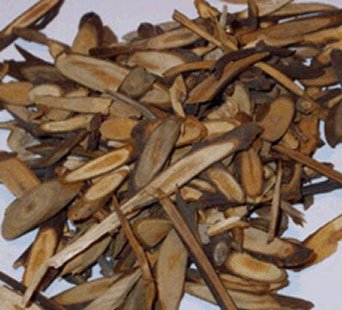Gui Zhi

| Gui Zhi in TCM:Explore the properties of Gui Zhi according to Chinese
Nutrition and Traditional Chinese Medicine (TCM):
Factoids:
English Name: cinnamon twigs, cassia twigs
Pharmacuetical Name: Ramulus Cinnamoni
Properties: acrid, sweet, warm
Temperature: warm
Channels: LU, HT, UB
Flavors: sweet, pungent
Tonifies: yang
Special Properties:
disperses cold, clears damp, resolves water accumulations, disperses wind, resolves phlegm, alleviates bi syndrome
Actions / Indications:
- Harmonizes Ying and Wei; release exterior wind-cold
(in combination with bai shao to harmonize ying and wei; induces sweating
to release exterior wind-cold excess)
- Warms and unblocks channels (gynecological problems
due to cold blockage of blood vessels, wind-cold-damp bi syndrome in
joints and limbs, especially shoulder)
- Warms Heart Yang Qi (irregular pulse, chest bi, palpitations
due to obstructed flow of yang qi in chest or heart)
- Warms Yang to Eliminate water or phlegm -
reduces edema (phlegm, fluids and edema accumulations due to
yang qi deficiency)
Special Notes:
- Compare to Rou Gui
- Gui Zhi has a slight diuretic effect, use caution with diuretic drugs.
Contraindications:
- (cc: pregnancy)
- (cc: excessive menstruation)
- (cc: warm febrile disease, yin deficiency with heat, bleeding due
to heat in blood)
Disclaimer: In accordance with our terms of service, by using this web site you agree that none of the information found on this web site constitutes medical advice. You should always consult your doctor before trying any particular food or herbal remedy to treat disease.
Folk remedies presented on this site are designed to address specifc TCM diagnoses, and are not one-size-fits-all. If you would like to learn more about Traditional Chinese Medicine (TCM) and how it relates to Chinese Nutrition, you can book in a free call with a licensed professional. There is no obligation to purchase.
[CLICK HERE for your free INITIAL CONSULTATION] |
